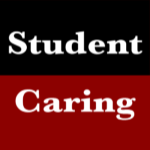One of the most amazing developments over the past decade for students and educators alike is the way technology has revolutionized education for students with disabilities. For years, disabled students struggled with class assignments or have been excluded from certain classes and subjects due to the school’s lack of resources. The result: Students with learning disabilities were subjected to unequal education opportunities and improper teaching methods, which is why teachers in special education today are highly sought after.
Thanks to the rapid development of computers, however, assistive technologies help students with disabilities in all areas, from learning curriculums to going outside and playing. Needless to say, these students have experienced a sea of change in our education system, ending their isolation and limited resources they have longed faced. Robots like Nao, for example, have made it easier for disabled students to access certain material, articulate what they’re trying to say, and most importantly, increase their knowledge by being an active participant in education lessons.
Why is being EdTech savvy so important for educators today? Well, new technologies like Nao allow students with learning disadvantages to have the same educational opportunities as other students. This means students with learning disabilities will have the chance to develop their science, technology, engineering, and math skills (STEM) skills. But how can assistive technology help students with learning disabilities in the long run? Here’s are three ways:
Enhances Speech-to-Text Softwares: Speech-to-text softwares are specifically designed to help students who struggle with reading and communicating. The technological software can be used for children who are blind, have dyslexia, or suffer from any condition that affects their vision. It doesn’t stop there, however. The text-to-speech (TTS) tool can also be used by students who have learning disabilities. The best part, students with autism, attention deficit hyperactivity disorder (ADHD) or intellectual disabilities can all benefit from using the TTS software.
How does the technology work?
The technology works by scanning and then reading the words to students in a calm and synthesized voice. That way, the sentences and paragraphs being read to them feels lifelike and uses all speech sounds for the student to clearly understand and apply later on. Some tools even allow students to change the software voice, which can be used to encourage better results when it comes to learning. This allows students to participate in online activities, such as emailing, texting, and accessing assignments.
Increases Their Arithmetic Understanding: Subjects like math and science are really black and white. In other words, when it comes to solving the problem, the answer’s either wrong or it’s right. Although subjects like math and science are tough for most students, they’re especially hard for students with learning disabilities. Fortunately, technology software programs can help.
In math, for example, there are electronic math worksheets that can help disabled students understand the material at their own pace. How? By helping students work through math problems on the computer screen. The numbers that are displayed on the screen can also be read aloud out loud using a speech synthesizer, which comes in handy for students who struggle with math problems.
Videotaped Social Interactions: Children with learning disabilities may struggle when it comes to figuring out what normal social interactions are. Three decades ago, a common practice for this was role-playing. The problem, however, was that other students didn’t take the exercise seriously. Therefore, the students with learning disabilities never benefited from the practice. With videotape social interactions, students can learn important social skills that go far beyond the classroom environment, without being offended or made fun of. These videos can help students work on their linguistics, academic problems, and social behavior.
Although each learning condition is different depending on the student, some students deal with more than one. Nevertheless, students who suffer from learning disabilities all face challenges in the traditional classroom environment. This might include not being able to walk fast enough from one class to another, or difficulty using the same format as other classmates. Whatever the case may be, these technological devices are able to meet every student’s unique needs. With a little help, these students can thrive inside the classroom environment thanks to equal education opportunities.
––––––––––––––––––––
Davis is passionate about K-12 education and loves exploring different ways to make learning a fun experience. If you can’t catch him the classroom, you might be able to find him at the gym or watching football (Go Broncos!). Thanks!

0 Comments